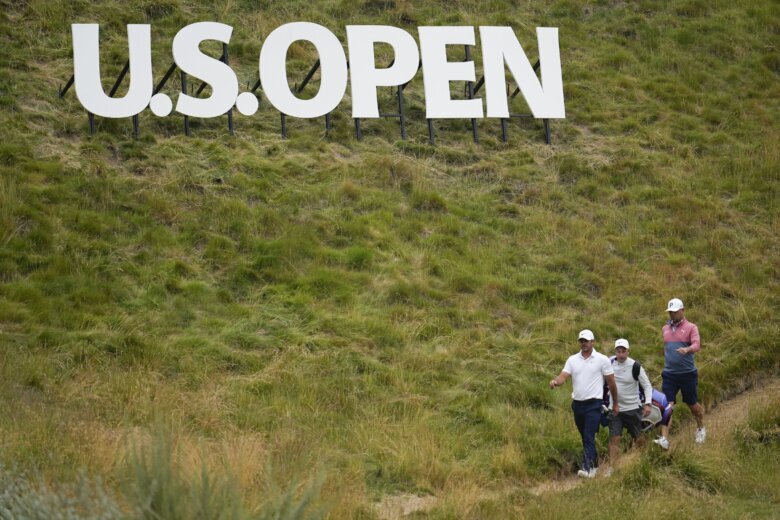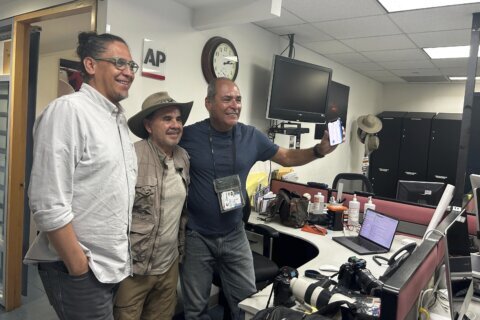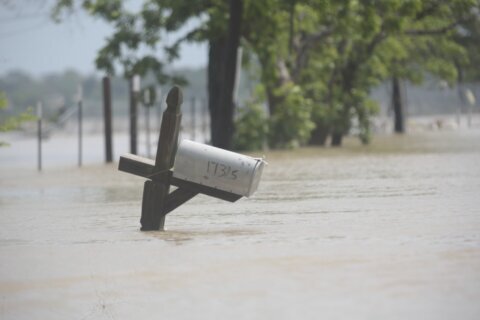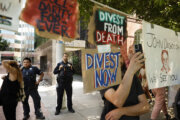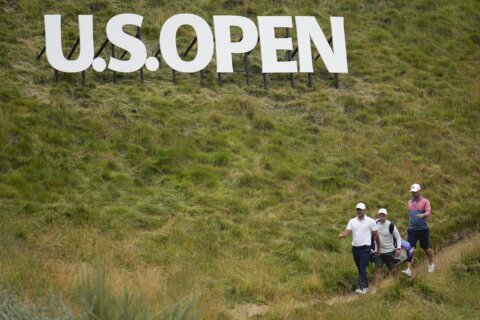
LOS ANGELES (AP) — Uncertainty off the course. Uncertainty on it.
The U.S. Open was set to tee off into uncharted territory Thursday, with the golf world perplexed by the recent shakeup-makeup between Saudi golf interests and the PGA Tour and 156 of the sport’s best players taking on a course hardly anyone has seen.
Pretty much every question heading into the 123rd playing of America’s national championship dealt with one or the other of those issues. Los Angeles Country Club is a beautiful mystery, the first course in LA to host the Open in 75 years.
It’s known for its runway-wide fairways — they average 43 yards across — but many of those expanses are heavily canted, built to reject tee shots into the healthy, spongy Bermuda rough or into the native, scrub-dotted and unpredictable sandscapes called barrancas that wind through this urban oasis.
There is a reachable par 4 — the sixth hole — that will, at times, play shorter than the downhill par-3 seventh. There’s the par-3 15th hole that can play anywhere from 80 to 135 yards, with tee boxes positioned at multiple angles.
Legend has it that the great Ben Hogan, when playing LACC for the first time, asked for an aiming point off the fifth tee box. His caddie pointed to four palm trees in the distance and said to hit toward them. Hogan’s response: “Which one?”
A wide-open course that demands precision and that hardly anyone — outside of Scottie Scheffler, Collin Morikawa and their 2017 Walker Cup teammates — has played under tournament conditions: Who knows what to expect?
“The most frequent question I’ve received in the last couple of years leading up to this championship, ‘What is the winning score going to be?’ USGA chief championships officer John Bodenhamer said. “I can genuinely say, more than any other Open, ‘I don’t know.’”
There is some risk in not knowing.
More than others that run the majors, the bosses at USGA have the most history of not wanting the tournament to be about them, but often missing that mark.
That’s usually because of the way the golf course is set up. The last handful of years, including stops at The Country Club outside Boston and Torrey Pines down the highway in San Diego, have been relatively drama free. The last time the USGA took its biggest show into uncharted territory was in 2017, to Erin Hills, the wide-open expanse formed by ancient glaciers in Wisconsin.
The wind that serves as that layout’s best defense never materialized. Brooks Koepka pulverized it, winning the first of his five major titles with a score of 16-under par.
The USGA didn’t overreact the way it did, say, back in the 1970s when Johnny Miller’s 5 under at Oakmont led to Hale Irwin’s win the next year at “The Massacre at Winged Foot” at 7 over. But 16 under tied the lowest U.S. Open score in relation to par in history. It was hardly the show the USGA expected.
Koepka is certainly part of this week’s story, too. He is four weeks removed from his third PGA Championship and comes to Los Angeles seeking his third title in this one, as well.
He is also a member of LIV Golf. His win at Oak Hill largely punctured the idea that all those who left the PGA Tour for the money provided by the Saudi-backed tour did so because they didn’t have the game to compete at the highest level.
While Koepka’s win wasn’t likely the driver of the end of the hostilities, the timing sure felt keen.
“The more chaotic things get, the easier it gets for me,” Koepka said as he, like all the other big-name players, was slammed with questions about the uncertain future of golf. “Everything starts to slow down and I am able to focus on whatever I need to focus on while everybody else is dealing with distractions, worried about other things.”
In many ways, this year feels a lot like last year. When the U.S. Open returned to The Country Club for the first time in 34 years, it came a mere week after LIV’s first tournament and with rumors swirling about who might defect next.
Then, they started playing.
More than the Saudis or LIV headliner Phil Mickelson (who is in Los Angeles this week, playing it very low key) or anybody’s paycheck, Matt Fitzpatrick’s 9-iron from a fairway bunker on the 72nd hole is what most golf fans will remember about that U.S. Open.
Chances are, this Sunday will produce another history maker. After that, the players will have all the answers they sought about a golf course most of them hadn’t seen. Then they’ll head down the road, still in the dark about what comes next.
“Even though I guess it is confusing,” Fitzpatrick said, “it’s pretty clear that nobody knows what’s going on apart from about four people in the world.”
___
AP golf: https://apnews.com/hub/golf and https://twitter.com/AP_Sports
Copyright © 2024 The Associated Press. All rights reserved. This material may not be published, broadcast, written or redistributed.

